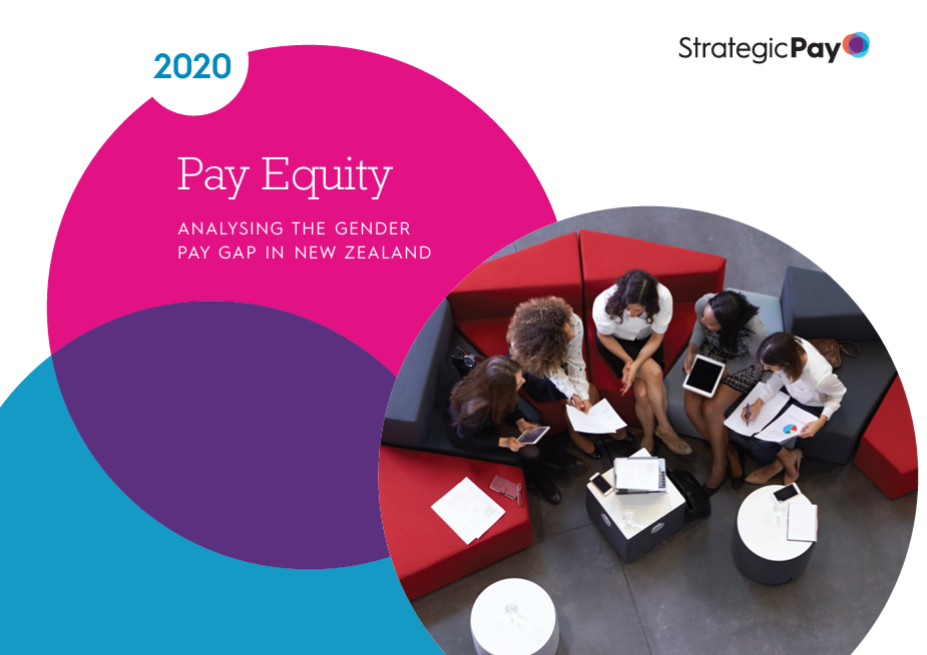Research
Does Pay Gap Reporting work? A review of international research and evidence
November 2025, Dr Jo Cribb
In her 2025 review of international research and evidence, Dr Jo Cribb discovered evidence of unjustified gender pay gaps within many organisations has been found across the globe, with researchers concluding it is evidence of discrimination.
To address unjustified pay gaps, many countries (including all EU member states and half OCED members) have introduced pay transparency measures. When businesses are required to report pay gaps publicly, it has driven meaningful action to close unjustified pay gaps. Doing so has seen national gender pay gaps drop by 3-5 percent.
Gender Pay Gaps Perceptions and Practices: Data Analysis conducted for Ministry for Women
2025, Strategic Pay
The MfW commissioned Strategic Pay Ltd to survey organisations across New Zealand about their perceptions and practices relating to gender pay gaps. The report includes an examination of barriers to actions and differences by sector, industry and organisation size
Pay gaps among Ethnic Communities in Aotearoa New Zealand
2025, New Zealand Policy Research Institute for the Ministry for Ethnic Communities
This report provides detailed analysis of ethnic pay gaps in New Zealand. The results highlight substantial pay gaps for many Ethnic Communities, particularly within the Asian ethnic group. Across nearly all groups, it found the unexplained component of pay gaps is substantial, suggesting that equalising education or job type alone won’t close ethnic pay disparities.
Gender and ethnic pay gaps: An industry-level portrait of Aotearoa
2024, New Zealand Policy Research Institute for the Ministry for Women
This research provides a descriptive examination of gender and ethnic pay gaps across a five-year period (2016-2022) across industries, exploring the structural factors driving these disparities.
It found that the gender pay gap varies considerably across industries and is the highest in media & finance (15 percent), professional services (15 percent), healthcare (14 percent), wholesale (14 percent) and education (13 percent).
Empirical analysis of Pacific, Māori and ethnic pay gaps in New Zealand
July 2022, New Zealand Human Rights Commission, AUT, New Zealand Work Research Institute
This research for the HRC explores the factors that contribute to and explain the Māori and ethnic pay gaps in New Zealand. The gaps between the average (as well as median) hourly wages for the European workforce relative to Māori and Pacific Workers is substantial.
Pay Equity: Analysing The Gender Pay Gap In New Zealand
2020, Strategic Pay
This analysis gives insights into the current pay gaps within the New Zealand context, allowing organisations to consider how they stack up within their sector or industry. These findings are based on Strategic Pay data as at March 2020. The findings can help inform decisions and encourage organisations to take a more active role in reducing their gender pay gap.
The disability gap 2018
2018, Stats NZ
The disability gaps 2018 presents a snapshot of life for disabled New Zealanders, including key facts about their work, social and economic lives.
Almost 1 in 4 New Zealanders are disabled, with data showing they are more likely to have worse outcomes than non-disabled people across many aspects of life, including work life.
Empirical evidence of the gender pay gap in New Zealand
March 2017, NZ Work Research Institute and Auckland University for the Ministry for Women
This research concluded that traditional drivers such as type of work, family responsibilities, education and age don’t explain the majority of the gender pay gap.
Around 80 percent of the gender pay gap is now due to ‘unexplained’ factors, which the Ministry for Women viewed primarily as behaviour, attitudes, and assumptions about women in work, including unconscious bias.








